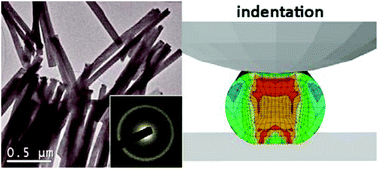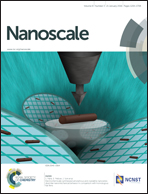Electrochemically synthesized amorphous and crystalline nanowires: dissimilar nanomechanical behavior in comparison with homologous flat films†
Abstract
The effects of constrained sample dimensions on the mechanical behavior of crystalline materials have been extensively investigated. However, there is no clear understanding of these effects in nano-sized amorphous samples. Herein, nanoindentation together with finite element simulations are used to compare the properties of crystalline and glassy CoNi(Re)P electrodeposited nanowires (ϕ ≈ 100 nm) with films (3 μm thick) of analogous composition and structure. The results reveal that amorphous nanowires exhibit a larger hardness, lower Young's modulus and higher plasticity index than glassy films. Conversely, the very large hardness and higher Young's modulus of crystalline nanowires are accompanied by a decrease in plasticity with respect to the homologous crystalline films. Remarkably, proper interpretation of the mechanical properties of the nanowires requires taking the curved geometry of the indented surface and sink-in effects into account. These findings are of high relevance for optimizing the performance of new, mechanically-robust, nanoscale materials for increasingly complex miniaturized devices.


 Please wait while we load your content...
Please wait while we load your content...